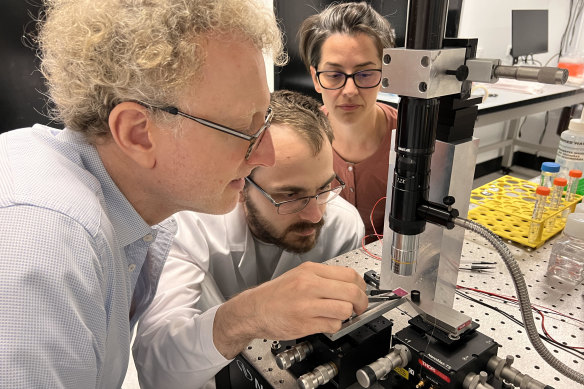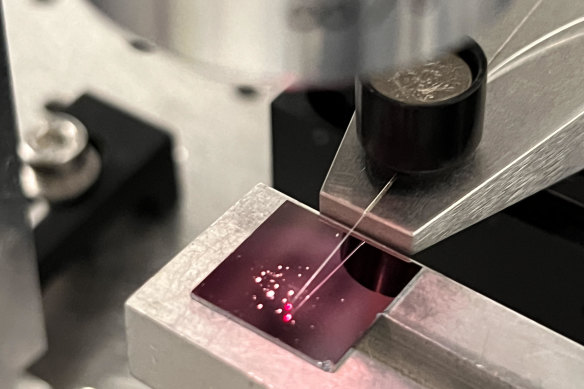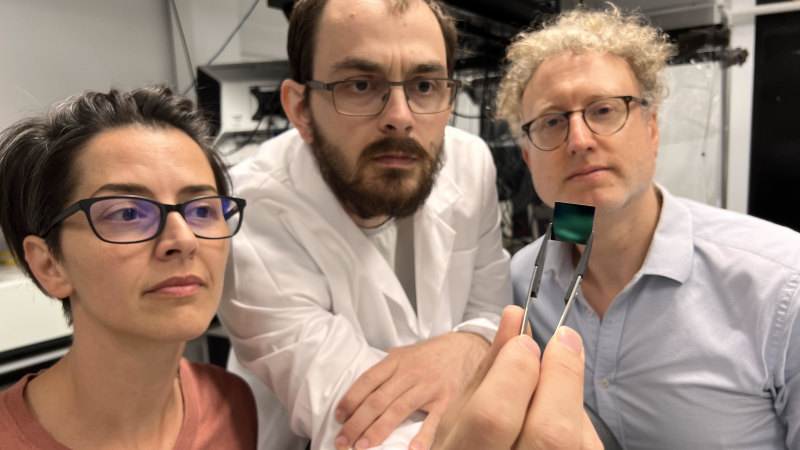Technology tamfitronics ‘It’s an arms race’: The new technology set to give drug-testers upper hand before Brisbane 2032
Tiny chips no bigger than the nail on your pinky may hold the key to cracking down on athletes taking synthetic Erythropoietin (EPO), a performance-enhancing drug, ahead of the Brisbane 2032 Olympics.
Currently there are just eight experts worldwide who can determine whether someone has tested positive for synthetic EPOs – and none are based in Australia. The process of differentiating between synthetic and naturally occurring EPO is meticulous and challenging – the substances look incredibly similar under a microscope, making positive doping cases difficult to detect.

Professor Warwick Bowen, Dr Igor Marinkovic, and Dr Pavlina Naydenova in the laboratory.Credit: Lars Madsen
However, that may be about to change after researchers at the University of Queensland announced a partnership with Sport Integrity Australia to develop technology that could make detecting synthetic EPOs more reliable, efficient, and accessible.
The result is quantum sensor chips, which use newly developed technology to identify proteins in synthetic EPO which look and move differently under a microscope to natural EPO, making it easier to tell if an athlete has taken the synthetic drug.
The project’s lead researcher, quantum physicist Professor Warwick Bowen, said the chips have a “really wide potential to change society,” with a potential large-scale rollout of reliable anti–doping tests in time for the Brisbane Olympics in 2032.
“We could fabricate hundreds of thousands of devices on a chip that are ultimately very low cost, and give a straightforward assessment of whether EPO is synthetic or not, and that will make EPO tests more widely accessible as well as more reliable.”

Testing on the chip being carried out.Credit: Lars Madsen
In contrast, current EPO testing methods require highly specific interpretations and expertise once samples are sent to an accredited laboratory by the World Anti-Doping Agency. EPO is also the only prohibited drug that has such a high level of subjectivity involved in the analysis process.
“There is currently no really good, widely used technique to do synthetic EPO testing. It’s hard to do,” Bowen said.
“It’s not enough just to show that someone has a lot of EPO in their body because it could be natural. You need to actually be able to distinguish and identify the synthetic EPO.
Loading
“That’s why it’s really important to develop a suite of different tools that can tell you what’s in someone’s blood. Anti–doping is an arms race, right? It’s an arms race between the dopers and anti-dopers.”
EPO is naturally produced by the kidneys, whereas the synthetic version is typically used to treat people with health issues such as kidney failure or anaemia.
However, synthetic EPO has since been used as performance-enhancing drug by some endurance athletes due to its ability to boost red blood cell production, which delivers more oxygen to their muscles. The World Anti–Doping Agency has banned its use by athletes at all times.
There are still some hurdles for the new technology to clear before it can be adopted for official testing in time for Brisbane 2032.
“There’s a runway of seven years or so for us to get the technology proven, and then partner with companies, or with a startup to create the product to actually be able to use the tool in anti–doping, and deliver it to the Olympics,” said Bowen.
“It may not work in this first try, we’re going to learn from the first try. We may have to design new devices, but I’m confident it’s going to work.”
Sports news, results and expert commentary. Sign up for our Sport newsletter.
Technology tamfitronics Most Viewed in Sport
Loading



